Knights and chivalry of three centuries. Knighthood and knights of northern France. Part of 1
(Second Book of Maccabean 12: 35)
foreword
Why in the Bible, where the rider meets 39 times, are the horsemen from Thrace mentioned, so they deserve this honor along with everyone else? And the thing is that Thrace was famous for its riders, and it was not for nothing that many Roman emperors, starting with Marcus Aurelius, included in their titles and the name “Sarmatian”. Although ... they were deceiving before their people, since all their victories over the equestrian peoples of the Great Steppe were short-lived and fragile. But it is significant how important was the role played by riders in stories humanity, especially if they were well armed.
That is why today we are returning to the knightly theme, but on a slightly different informational level. If earlier it was mainly about those or other types of knightly weapons, now it will be a kind of journey across countries and continents, during which knights and their weapons will be viewed from one region to another. But in strictly defined chronological frameworks - from 1050 to 1350. It was a very important period in the history of the development of weapons and tactics of its use, the era of the Crusades and the establishment of international relations between very distant countries. Many of the VO readers pointed out the need for just such an approach in presenting the theme of knightly weapons, since it would have provided an opportunity to get a complete, complete picture, and the validity of such a remark should be recognized. However, the volume of information by region is very large, even if we confine ourselves to a simple overview of the information available on them. In addition, have to meet with a huge number of repetitions, which, of course, must be avoided. Therefore, the materials of the cycle will be primarily focused on giving a general “picture” of the genesis of knightly weapons in different “lands and countries”, then showing individual samples of elements of knightly weapons, and, finally, to draw conclusions about the general nature of what happened in one way or another. place at a specified time.
Now, before we consider the knights and knighthood of the specified period directly, let's see what, in fact, had the “horsemen of war” in different countries by this time, and how did they come to this common?
Norman archers and riders go on the attack. However, not everyone is still holding spears under the arm. Some prepare in the old manner to throw them. Scene 51 (fragment). Photo from the “Carpet Museum”, Bayeux, France)
To begin with, at the beginning of a new era in the territory of Eurasia, there were only three really great empires: Roman in the West, Chinese in the East, and the Persian state between them. The horse staff, without which the heavy cavalry is inconceivable, China received from Fergana, because the local breed of horses, the descendants of the Przhevalsky horse, were not suitable for plate cavalry; the Persians received horses from Arabia, and the Romans from Arabia, the Black Sea steppes, as well as Spain. "Movable snaffle" has already been described in detail by Xenophon. Spurs among the Greeks, the Celts and the Romans appeared already in the IV - III centuries. BC, and then spread to the East. Then in the IV. somewhere on the border of China and Korea, stirrups were invented, along with the Huns, migrated to Europe.
On this miniature from the manuscript 869 - 950. riders still have no riders. (Saint-Omer, France, Regional Library of Saint-Omer, France)
And now, by the time when, at the time of the terrible Rome, no less formidable Goths had advanced by this time, their weapons seemed sufficiently “knightly”. This can be judged by the example of Totila, the proud king, and how he prepared for the battle on the eve of the battle (in the description of Procopius of Caesarea), although according to archaeological data, he and his soldiers still did not know the stirrups.
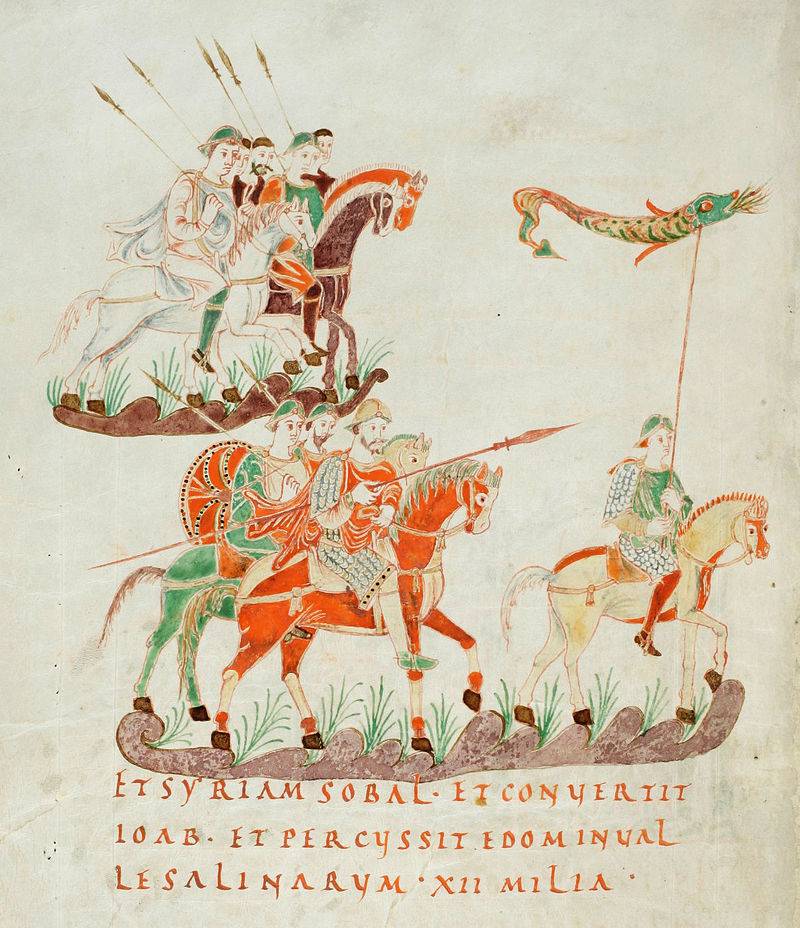
Frankish army in the campaign. Illustration for the psalm 59. "Golden Psalter". Around 880 (St. Gallen (monastery of St. Gall), the library of the monastery, Switzerland)
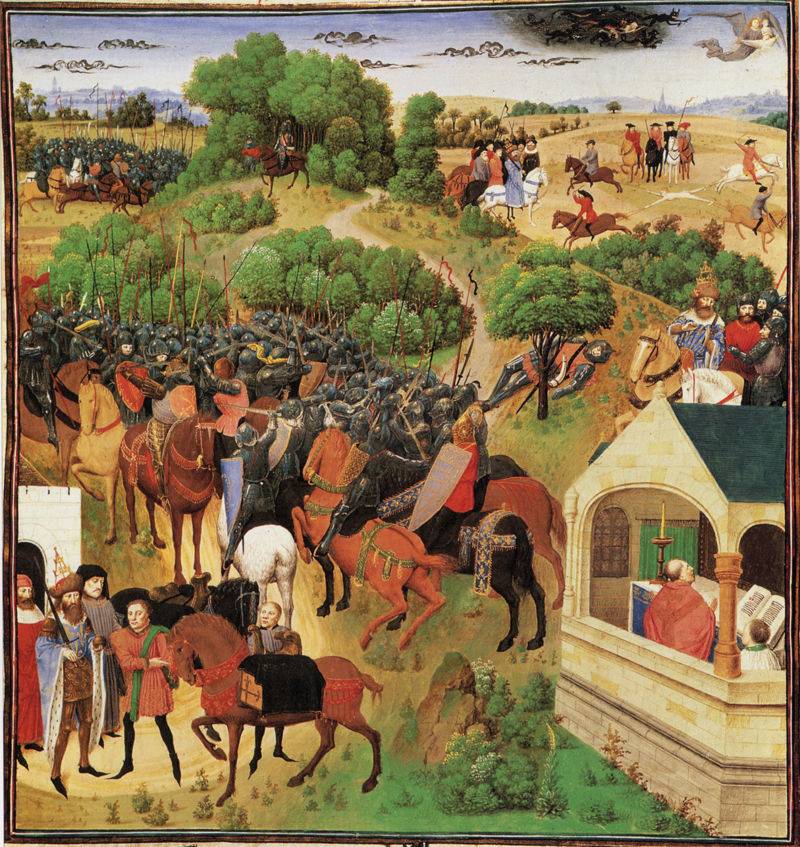
A miniature by Simon Marmion on the story "Songs about Roland" from "The Big French Chronicles". Ser. XV century. (Russian National Library, St. Petersburg.)
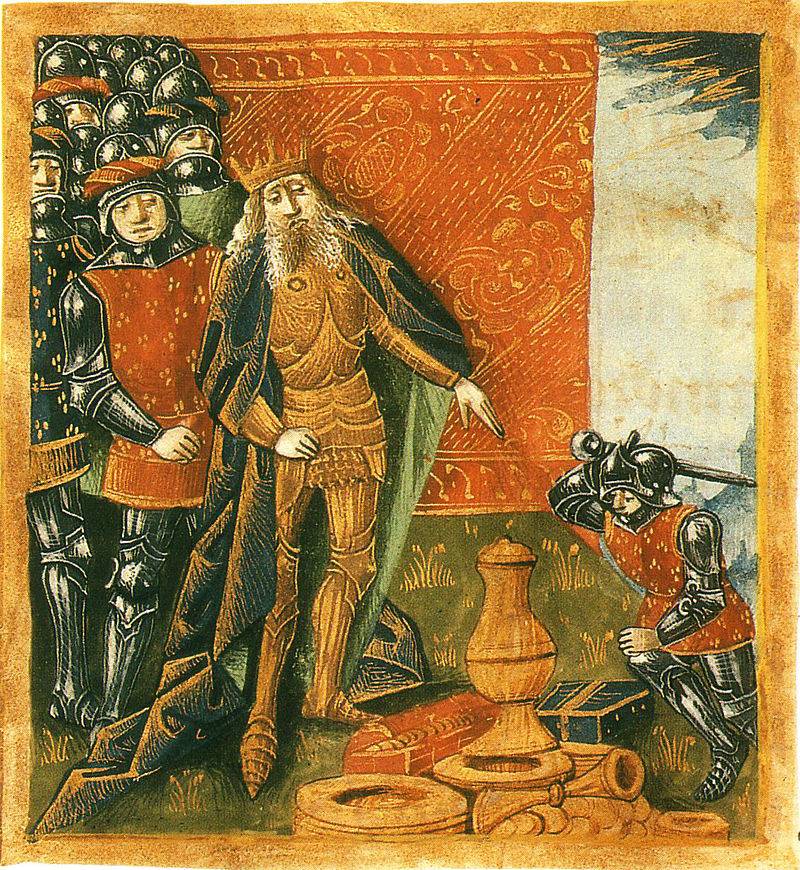
King Clovis and Chalice in Soissons. It is quite obvious that Khlodvig in 486 year simply could not wear such armor, which indicates the absence of historical thinking among the artists of that time. Miniature from the "Big French Chronicles". Ser. XIV century. (National Library, France)
Now let's turn to the Song of Roland, the canonical text of which is Oxford Manuscript, written somewhere between 1129 and 1165 for years in the Anglo-Norman dialect and stored in the Bodlian library of Oxford University, then you can read the following:
Great Karl Spain plundered,
Destroyed the city and occupied the castles.
He thinks the time is peaceful,
And goes to sweet France back.
Here is his Roland puts on the ground.
From the hill a banner flew menacingly to the sky.
Around are French tents.
Meanwhile, in the gorges of the Saracens jump.
On them are steel shells and armor,
All wearing helmets, girded swords,
On the neck shield, a spear in his hand clamped.
Moors sat in an ambush in the mountain more often.
Four hundred thousand of them gathered there.
Alas, the French do not know!
Aoi!
However, neither steel armors (in the sense in which we understand this word) nor the battles at that time had horse warriors, so this is either an inaccurate translation, or ... later scribes replaced the already incomprehensible words with more “modern” ones. What do we base this statement on? First of all, this is, of course, the most important “document” of the era we need - the tapestry from Bayeux. In fact, this is not a tapestry, and ... the most common embroidery of a different type with seams and threads of several colors on a linen cloth, and sometimes quite funny. There is a defecating man, a man with green hair and a blue horse. The end of it is torn off, which is not surprising, because its length already reaches 68,38 m with a width of only ... 48 / 53 cm! There is an interesting suggestion that its authors were not at all Queen Matilda, the wife of Guillaume the Conqueror, but English monks from the monastery of St. Augustine in Canterbury. However, be that as it may, but it is important that her age is depicted there. The first written mention of its existence dates back to 1476 year. But it was made undoubtedly much earlier, because it depicts warriors with weapons and in armor at this time that no longer existed, something is known from other sources. Consequently, “embroidery from Bayeux” refers to the time of the battle of Hastings, which it depicts, that is, it may be 1066 year, but, most likely, it is several years older. By the way, the very "conquest of England" by Guillaume the Conqueror was nothing more than an expansion of the northern counties of northern and eastern France, and from this region we will begin our journey into the knightly times of that distant pore. I would like to emphasize that the illustrative material for this series of articles will be excellent miniatures from medieval manuscripts - visual witnesses of that distant era. So…
Knights and knights of Northern France. Part of 1
To begin with, we recall that the state system of France at that time was very different from the modern one, although, as a state, it already existed. And her “map” was not at all like the one we know today. Thus, in the middle of the 11th century, the county of Flanders, which is currently western Belgium, was part of the French kingdom, but Brabant and Hainault in the east, which are today part of Belgium, then belonged to the Holy Roman Empire. Champagne was also rarely ruled by the French kings, and Alsace and Upper Lorraine also belonged to the Empire. The lands of the duchy of Burgundy around Dijon were part of France, but imperial was the county of Burgundy around Besançon. To the south, almost the entire territory to the east of the Saone and Rhone rivers was also the property of the German emperors, and the French monarchy was still “waiting in the wings” and only by the middle of the XIV century did it begin its advance to the East.
However, in this period of time, Northern France itself can by no means be considered homogeneous either culturally or even militarily. Brittany was largely Celtic in language and retained its military customs until the end of the XII century. In the XI century, Normandy was still different from the rest of the country by the fact that the Viking-Normans settled there at one time, although they very quickly and successfully learned military science from the French and, first of all, how to use troops of heavily armed cavalry in infantry fighting. The Flemish were the most different from all the past; much of which spoke Flemish dialect (that is, Dutch) and, as many believed, were not French at all. Even then, the infantry played a much more prominent role among them than anywhere else in France.
The critical moment of the battle of Hastings. A rumor spread among the Norman knights that their leader had been killed. Then the duke bared his head so that he could be recognized, and Count Eustace of Bologna, pointing to him, shouted: “Duke William is here!” Scene 55 / 56. Photo from the Carpet Museum, Bayeux)
A number of foreign historians believe that Northern France, which had so successfully opposed Britain, was the main source of Western European military fashion, but not technological or tactical innovations. It has been observed that from the 9th to the 11th centuries the value of poorer vassals serving either as infantry or in the unarmed cavalry steadily declined. The term milites now began to refer specifically to the rider, usually dressed in armor, whereas earlier it was meant simply armed people without distinction on horseback and foot.
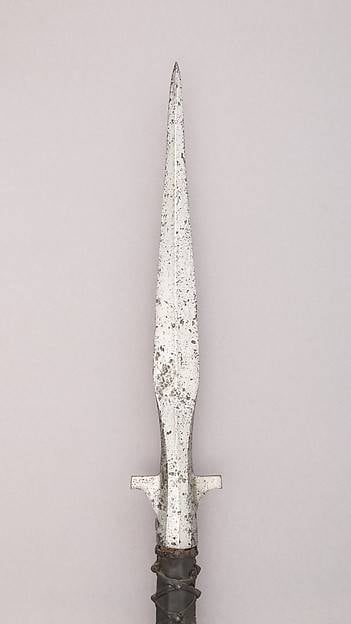
The spear of the XV century. The length of the 23,3 cm. Weight 2579,8 g. Such "winged tips" appeared in Europe at the same time with the knightly cavalry and were used until its disappearance. The side projections did not allow the spear to go too deep into the body. (Metropolitan Museum, New York)
That is, in 1050 and later, there was already a specialization in the field of military affairs and the allocation of knights as a military elite. But massive military gatherings are becoming rare. However, the cities have not yet had great military significance, either as a source of troops or as centers of defense. But the prohibition of the church on the war, establishing the so-called "God's peace", took place both in the north of France and in the south. And by limiting the scale of the hostilities and their duration, the church only contributed to the professionalization of the warrior class.
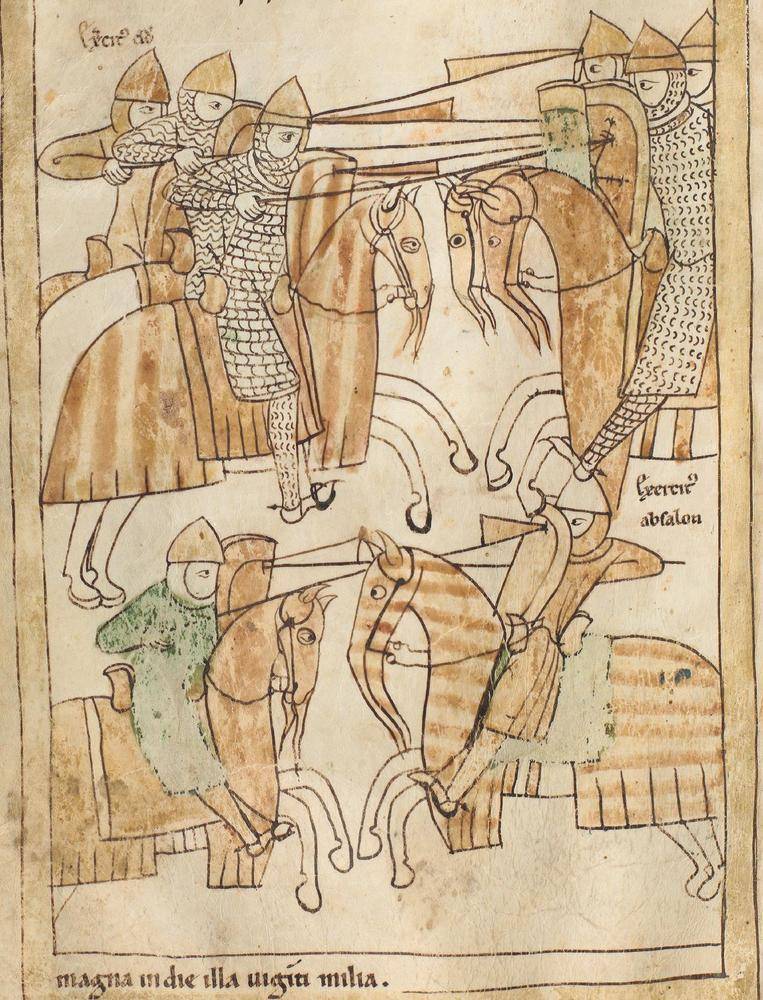
A miniature of 1200 with a picture of horsemen in hauberg-type mail armor using the spear quilting technique. Spears are equipped with triangular pennants, shields in the form of an inverted drop. Horse blankets, which still served to protect animals from the heat, attract attention. ("Pamplona Illustrated Bible and Lives of Saints", Pamplona, Spain, Library of the University of Augsburg, Germany)
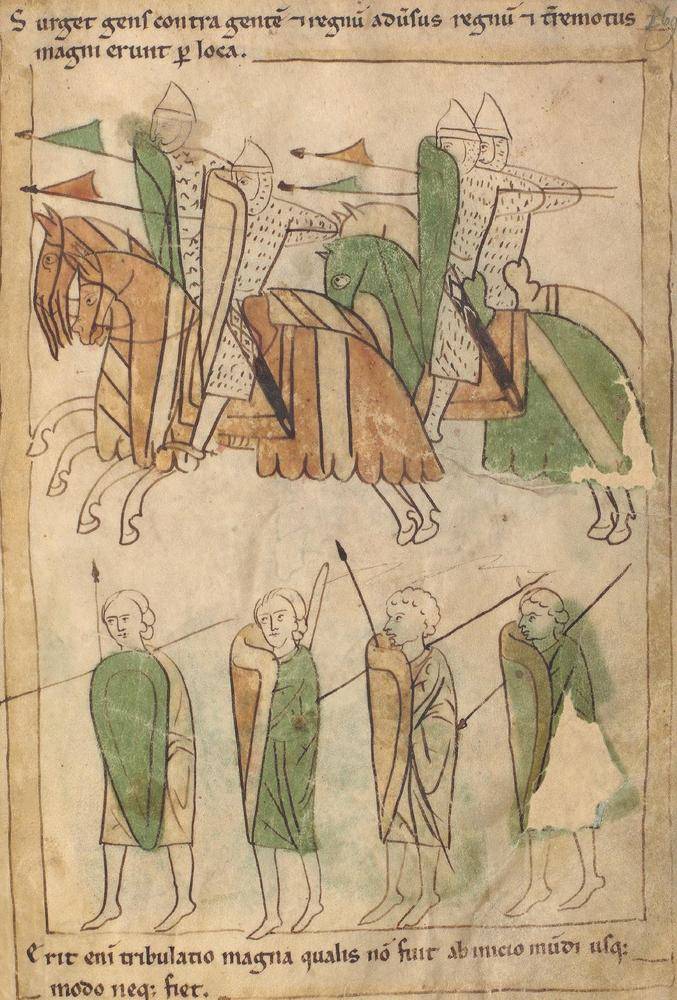
The following is a miniature from the same manuscript. Riders at the top, infantrymen at the bottom, whose weapons are different from equestrians.
By the end of the XI century, military equipment of riders was sufficiently standardized and became very expensive, and its correct use began to require skills that came only as a result of long training. Moreover, the milites trained in the squad, when they were summoned by the lords to their court, and, of course, individually, "at home", in fortified castles. "A knight is one who trains a lot with weapons"- such was the view on knighthood at the beginning of the period under study. Moreover, it went down, and where did he get this weapon from, where did he get his free time for this, as well as food for himself, as well as for his horse. The implication was that he had all this, otherwise what kind of a knight he was!
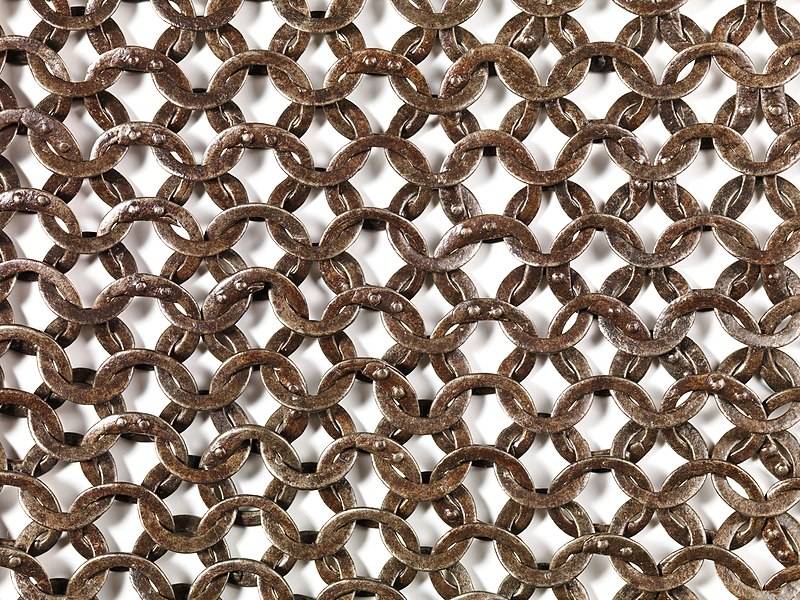
A typical European chainmail of welded rings, connected with unlocked U-shaped brackets. (Metropolitan Museum, New York)
The combat coordination of the detachments was quite high. For example, the “feigned retreat”, successfully applied in the battle of Hastings, at this time became a common tactic, at least among the Normans and the Bretons. The “spear-quitting” technique, that is, when the rider pinches him under the arm, became the most visible tactical device in Western Europe at the end of the 11th and early 12th centuries. However, heavy and long swords continued to be a very important weapon of cavalry. The fact is that the tips with a crossbar on “winged spears” did not always allow to keep these weapons after the first spear strike, and then the rider had to fight with a sword. This led to the lengthening of his handle, which had previously clamped the warrior's brush, while the crosshair began to bend down to the blade and lengthen to the sides.
Bas-relief depicting the Conqueror in Dives-sur-Mer, Château Guillaume le Concourt, Falez. Attention is drawn to the "armor" of the sewn on the base, and not riveted rings and the long Norman "serpentine shield."
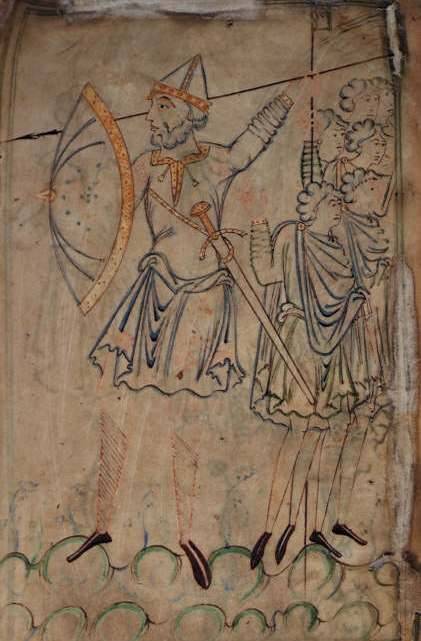
Biblical Goliath. A realistic image of a warrior from the early 11th century, from the Cotonian Psalter or the Psalter of Tiberius (c. 1050, Winchester). The crosshair of the sword is significant because now it is increasingly used by horsemen. (British Museum, London)
The value of archery also increased, although in some areas it was more popular than others. Normandy in this case claims a certain priority in the use of onions. At the same time, in France, as in most other countries of Western Europe, the bow was gradually replaced by a crossbow. The importance of crossbowmen indicates the appearance of horse infantry, armed with crossbows, which began as early as the end of the XII century. Such arrows were also professionals in their field and in the same France were under the authority of the “Grand Master Crossbowmen”, which title appeared in 1230 year. It is believed that the crossbow was largely a response to the spread in Europe at the end of the XIII and the beginning of the XIV century plate armor.
Archers and crossbowmen. Miniature from the World and Marienleben Chronicle manuscript, 1300-1350. Lower Austria. (Library of Halle-Wittenberg University named after Martin Luther, Germany)
Rare depiction of horse archers on a miniature from the World and Marienleben Chronicle manuscript, 1300-1350. Lower Austria. (Library of Halle-Wittenberg University named after Martin Luther, Germany)
The process of military specialization, which began in the 12th and 13th centuries, became especially noticeable later. The kings and their barons began to make more active use of mercenaries. For example, in 1202 - 1203. The French king on the Norman border had a military contingent of 257 horse knights, 267 horse sergeants, 80 horse crossbowmen, 133 foot crossbowmen, and about 2000 foot sergeants, who were also supported by 300 mercenaries, whose identity to the type of military is unknown. That is, it was a small, but sufficiently professional army.
A miniature depicting fighting horsemen, dated 1365 from Rudolf von Ems’s World Chronicle. (State Library of Baden-Württemberg, Germany)
Flanders all this time remained the main source of mercenary troops, both cavalry and infantry, up to the XIV century. Many cities have created their own militia, the soldiers in which supplied the city guilds. Moreover, the infantry continued to play a vital role throughout the first half of the XIV century, although subsequently its role was again reduced. These included light infantry with darts, known as bedouts, who apparently acted in close contact with the knightly cavalry. Firearms first appeared to the French as early as 1338, and were often mentioned in the 1340’s chronicles.
Viking Funeral. The painting by Ch. E. Butler (1864 - 1933), 1909. The soldiers are depicted in scaly shells, which in general does not contradict historical facts. At the same time, due to the greater weight and high cost of metal, chainmail has become more widespread, despite the considerable labor intensity of its manufacture.
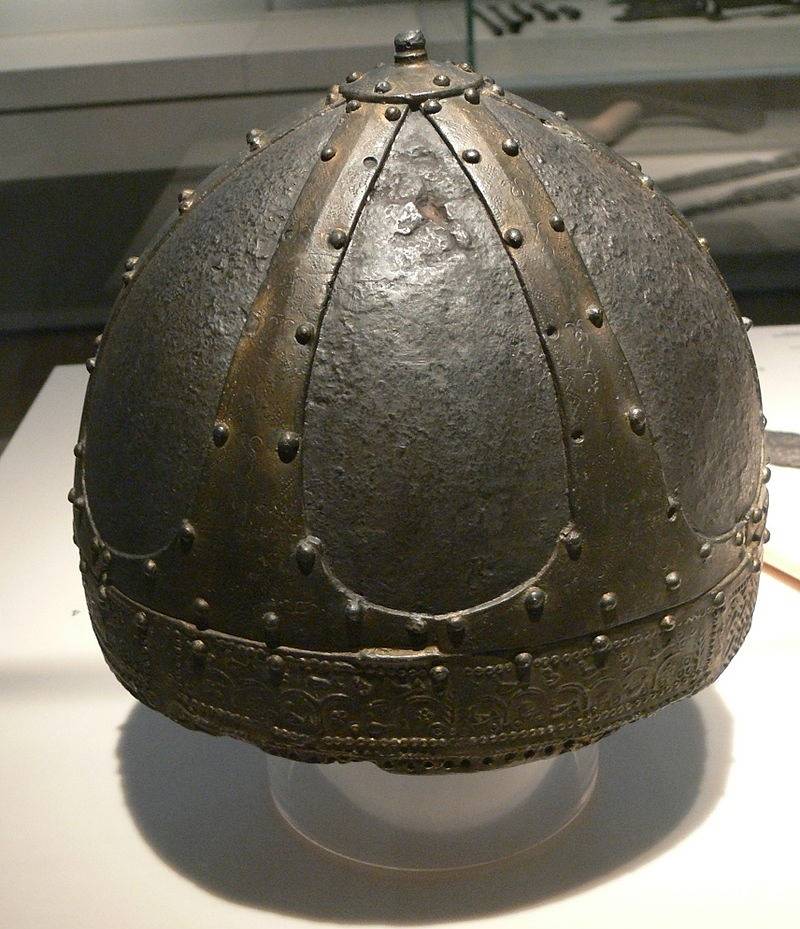
Segment helmet VII. (German National Museum, Nuremberg, Germany)
PS Interestingly, in his message about the Battle of Hastings in 1066, written before 1127, William Melsmbery says that before the beginning of the battle, cantilena Rollandi, that is, a song about Roland, “as an example of a belligerent husband to inspire the fighters, was performed”. You, a Norman poet of the 12th century, adds to this that Tylefer sang her, who also asked for the honor of delivering the first blow to the enemy.
Использованная литература:
1. Bridgeford A. 1066. The hidden history of the Bayeux Tapestry. L: Fourth Estate, 2004.
2. Nicolle D. The age of Charlemagne. L .: Osprey (Men-at-arms series No. 150), 1984.
3. Nicolle D. Arms and Armor of the Crusading Era, 1050 - 1350. UK L .: Greenhill Books. Vol.1.
4. Verbruggen during the Middle Ages from the Eight Century to 1340. Amsterdam - NY Oxford, 1977.
5. Gravette, K., Nicole, D. Normans. Knights and Conquerors (Transl. From English A.Kolina) M .: Eksmo, 2007.
6. Cardini, F. The Origins of Medieval Knighthood. (abridged translation from Italian by VP Haiduk) M .: Progress, 1987.
To be continued ...
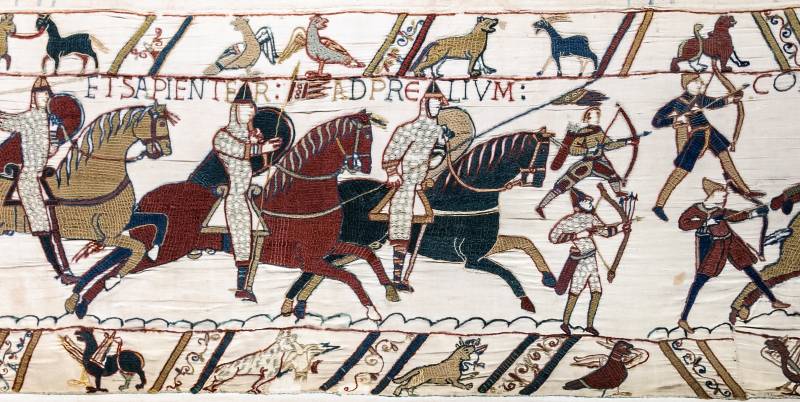
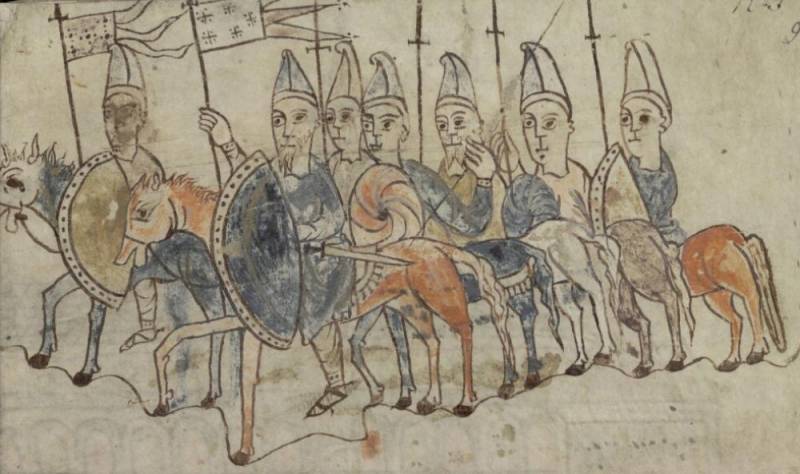
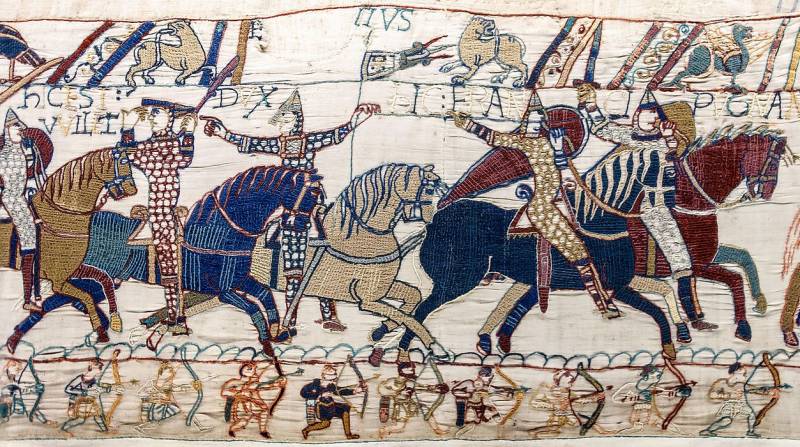
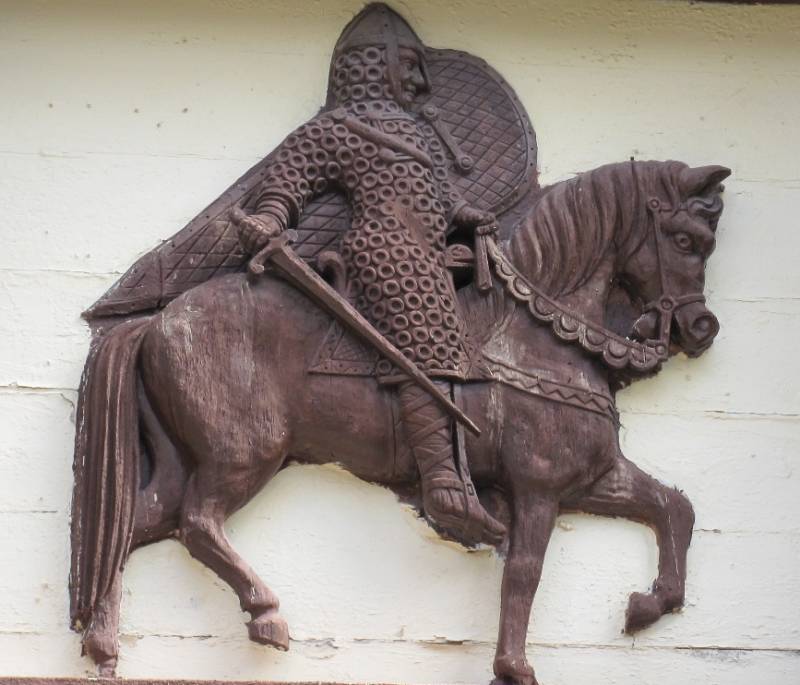
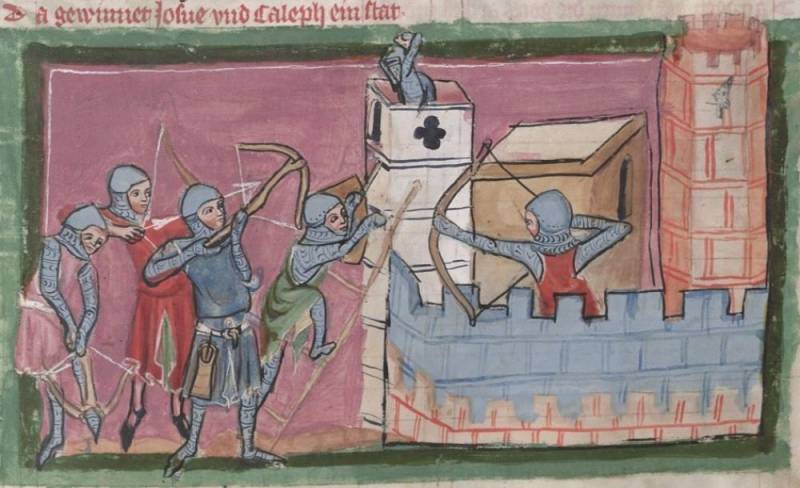
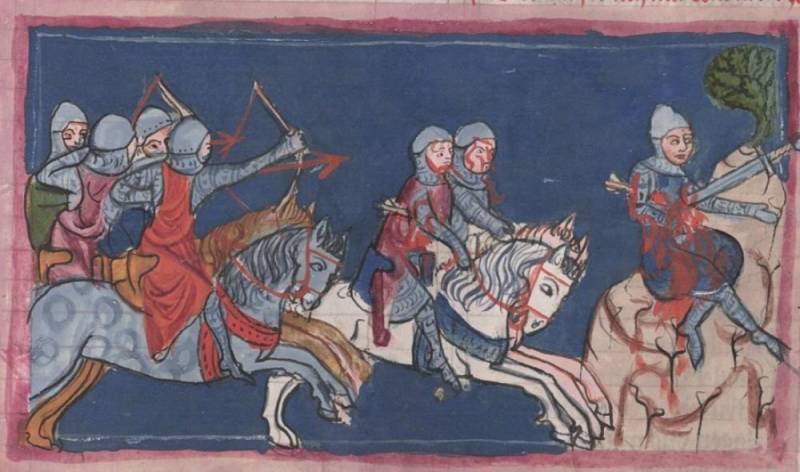
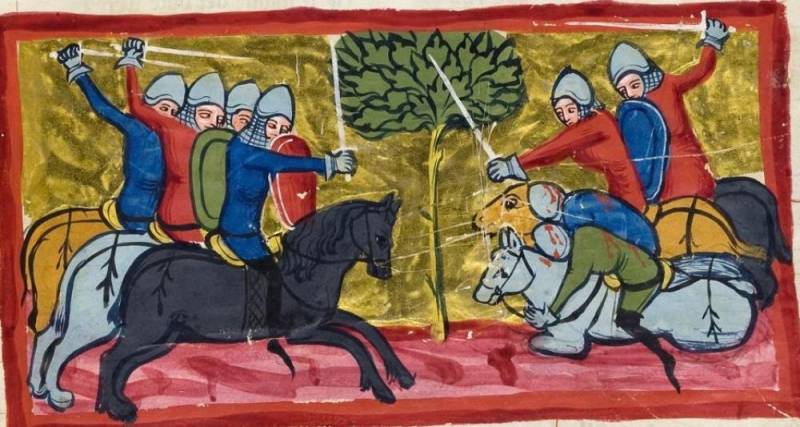
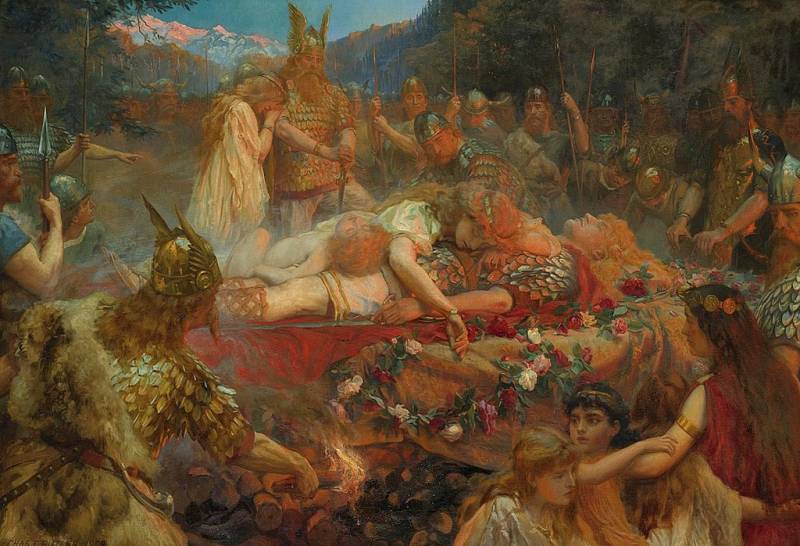
Information